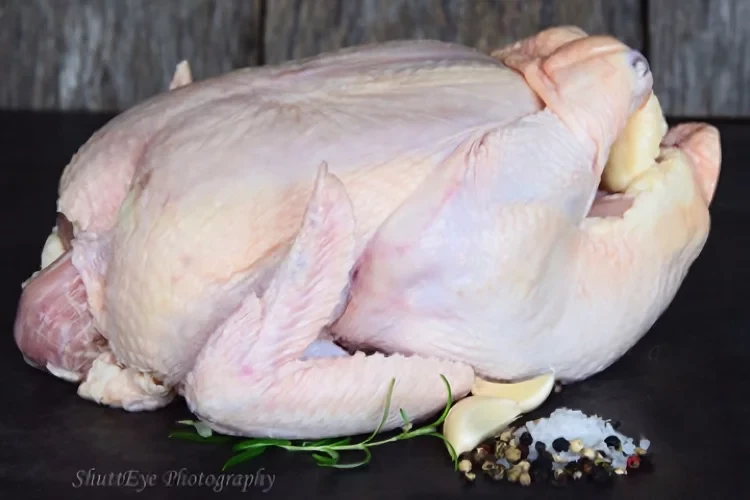
Broilers are young meat chickens, selected to be meaty and grow faster than laying-type chickens. Think about the phenotype difference between a basketball player and a lineman in football.
We purchase chicks from an independent hatchery, starting the birds in a brooder for warmth and protection. Somewhere between 2 and 3 weeks we put them on pasture in floorless 12 ft. X 10 ft. X 2 ft. high portable shelters that we move every day.
Each shelter has about 75 birds in it so in their 5-6 weeks on pasture each bird enjoys about 60 cumulative square feet of pasture, given in daily installments. A fresh salad bar and change of bedding each day. While chickens only eat 10-15 percent of their diet in forages, those green leaves are like a tonic for health and proper nutritional balance like Omega 3 fatty acids.
Because chickens waken early, we move them at daybreak while the dew is still on the grass and it’s as crisp and succulent as possible. The covered shelters protect these vulnerable birds from aerial and ground predators, which are many. Everything that goes bump in the night likes chicken.
Depending on growth, we process these birds at 7, 8, or 9 weeks. They eat a non-GMO locally sourced ration and inhale no fecal particulate like factory birds. They get fresh air, sunshine, and small enough groups to keep from being stressed. The first group starts sometime in March and the last bird finishes in late October. The entire broiler program is a 6-month on, 6-month off project and we rely on freezers to insure year-round supply. Chickens don’t like snow; the seasonality accommodates the chickens during their most comfortable growing time.
To learn more, check out some of our favorite blog posts here and here.
Availability: Growing season is May - October. Polyface stockpiles these for the winter months. We try to put enough in stock to last through April.

"I picked up our first order last week. Something I noticed about the chicken. It didn’t have the odor that even the organic Costco chickens have. No odor…just fresh. I spatchcocked the first chicken, and it was delicious." M. F.

